
What absolutely must get done on the winter homestead
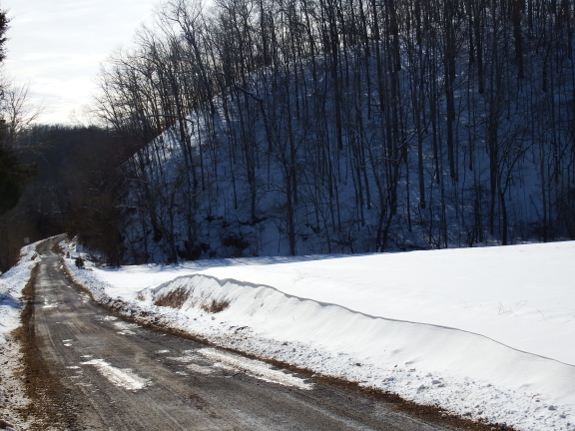
Great question, Karen
(especially since it gives me an excuse to include lots of snow photos
in this post)! The answer, of course, will depend on where you live and
on what kind of homestead you have. Presumably, if you homestead in
Alaska, you've worked out systems to deal with all of the cold-weather
issues, and -22 is just par for the course. So, for the sake of this
post, I'll assume that you live exactly where we do and homestead
exactly how we do.
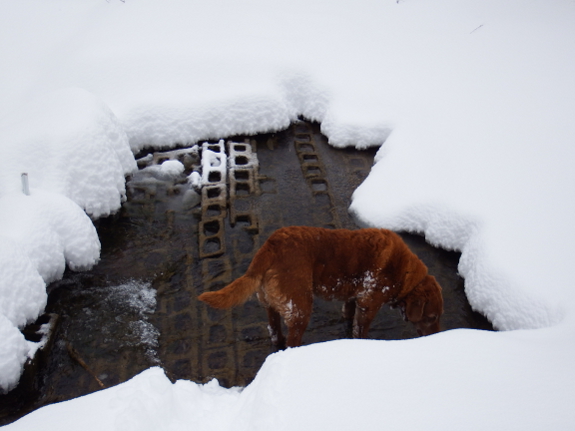
I've spent a lot of time
over the past week wondering how homesteaders managed before the era of
10-day weather forecasts. Luckily, modern homesteaders have quite a long
heads-up and tend to know when cold spells are coming. As a result,
Mark and I prepared extensively before our current deep freeze:
- Splitting lots of firewood and stacking it on the porch for easy access.
- Pouring out our old stored drinking water and refilling the jugs, then filling a few buckets with wash water to sit on the kitchen floor for animal hydration and dishes.
(This assumes that your water, like ours, reliably freezes around 5
Fahrenheit, but causes no problems except requiring water rationing.)
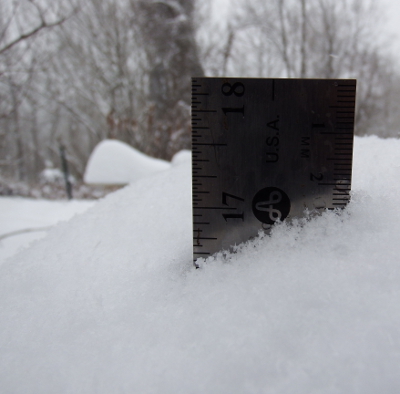 Cooking lots of easily reheatable meals for simple human nutrition when the power goes out.
Cooking lots of easily reheatable meals for simple human nutrition when the power goes out.- Making sure the top layer of deep bedding in the goat barn and
chicken coop is very fresh since the animals won't want to go outside
and will be adding more manure than usual to the bedding. (Plus, fresh
bedding will keep them warmer during those frigid nights.)
- Filling the goat manger with hay up to the brim. (Remember, a belly full of hay is the best way to keep your goats warm.)
- Moving any inside plants a little further away from the window and/or closer to the fire. Lifting anything perishable (like sweet potatoes) that are sitting directly on the floor up onto a counter so they won't freeze.
If you messed up and
didn't prepare, some of these tasks can be done on sunny afternoons
during the deep freeze. But I'll assume they're not part of your daily
chores for the sake of this post.
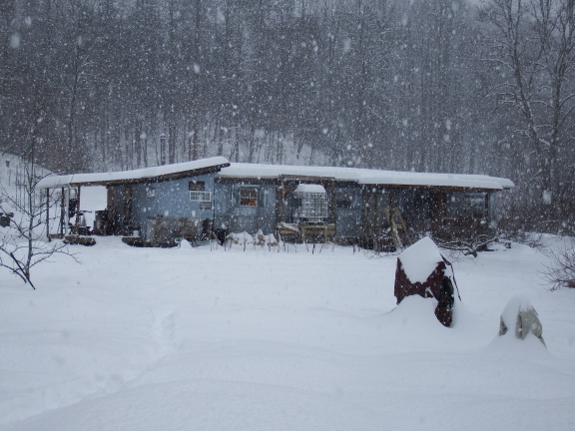
Okay, so the mercury has plummeted --- what do you absolutely have to
do and how long does it take? Starting at dawn, I make two quick trips
into the outside on ultra-cold mornings. The first involves bringing a
bucket of warm water and their morning ration to the goats, and taking
in yesterday's bucket of ice. The second involves bringing a chicken waterer
full of warm water to the chickens, tossing a bit of food into their
coop, and then taking in any eggs. Actual time spent outside: two
5-minute sessions, with glove-warming lulls in between.
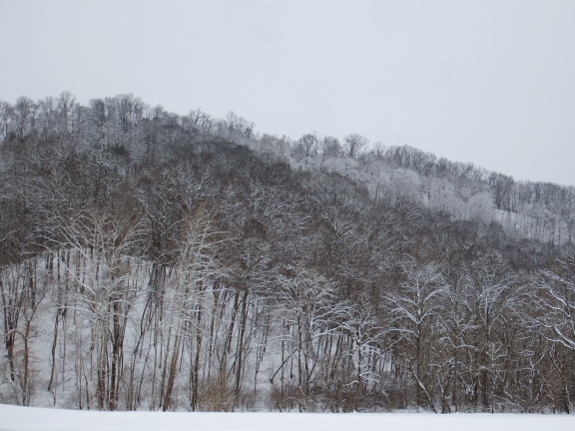
The second trip is
similar to the first and occurs right after lunch. Once again, everyone
gets warm water swapped out for the morning ice, and I've noticed that
this is when the goats go 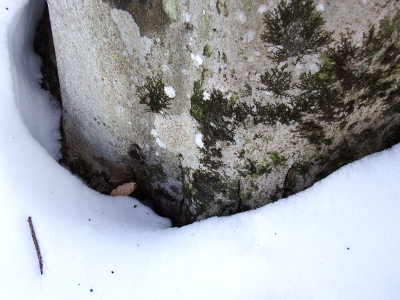 crazy
drinking, having spent the morning filling up on hay. This is also when
I tend to gather our eggs on cold days --- some will have frozen solid
and cracked if the night got below 0, but often I'm able to nab them in
good condition as long as I get there by early afternoon. Finally, while
my boots are already on, I bring in enough firewood to make sure I can
keep the wood stove raging until the next morning, while Mark often
takes this time to bring in a bucket or two of water from the tank so we can catch up on dishes. Actual time spent outside: 20 minutes, with more dawdling to enjoy the snow.
crazy
drinking, having spent the morning filling up on hay. This is also when
I tend to gather our eggs on cold days --- some will have frozen solid
and cracked if the night got below 0, but often I'm able to nab them in
good condition as long as I get there by early afternoon. Finally, while
my boots are already on, I bring in enough firewood to make sure I can
keep the wood stove raging until the next morning, while Mark often
takes this time to bring in a bucket or two of water from the tank so we can catch up on dishes. Actual time spent outside: 20 minutes, with more dawdling to enjoy the snow.
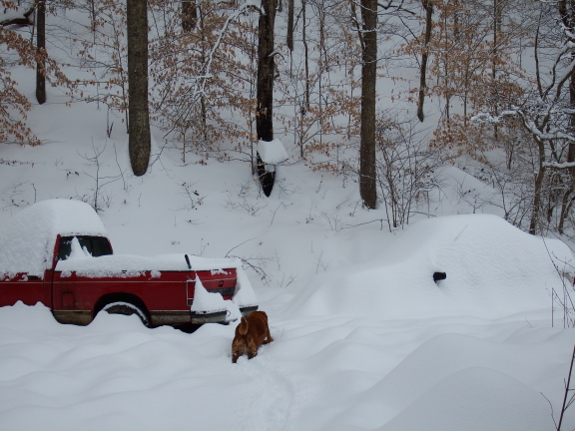
Of course, I can't
survive on a mere half an hour of outside time per day, so as long as
the day gets above 20, I tend to trick Lucy into going out for a walk
with me in the afternoon. She and I take turns breaking trail through the thick snow, and we do all the things that don't actually need to be done. We carry in more hay to top up the manger, check the mail box, and brush snow off the sap-bucket roofs. Then we settle in for a well-deserved rest in front of the fire. Cold and snow are a great excuse to take it easy!
Want more in-depth information? Browse through our books.
Or explore more posts by date or by subject.
About us: Anna Hess and Mark Hamilton spent over a decade living self-sufficiently in the mountains of Virginia before moving north to start over from scratch in the foothills of Ohio. They've experimented with permaculture, no-till gardening, trailersteading, home-based microbusinesses and much more, writing about their adventures in both blogs and books.
Want to be notified when new comments are posted on this page? Click on the RSS button after you add a comment to subscribe to the comment feed, or simply check the box beside "email replies to me" while writing your comment.

The weather in central Ontario, Canada is a lot colder, and the winter a lot longer, than your location. Homesteading here is completely different in its day-to-day manifestations. My partner works out of doors, away from home, at least eight hours a day, six days a week, and the proper clothing is essential to survival. The snow is too deep to walk through, and if one wants to travel far in the bush snowshoes are another essential bit of outerwear.
I grew up visiting my Grandparents, who lived a rural life in central Ontario. They did not have indoor plumbing until I was more than eighteen years old. The outhouse was a thrilling and memorable trip at -30C! I thought I remembered that you have a composting toilet on the homestead, but you don't mention it as one of your outdoor "visits". Just wondering if this was a polite omission, or if you have some cold weather alternative to nature's call?
Your day is very similar to mine. I have had to shovel out the chicken run... they cant free range with the almost 8 feet of snow we have had, but I have been able to keep a small area shoveled out, and then I take a hay fork and try to sift the straw to the top of the remaining snow, and then add more straw to both run and coop. The most effort goes to keeping clean unfrozen water available. Even the frost free hydrant froze this year, so I carry water by hand. Eggs freeze unless I get them before about 8am. Even in this weather, my young pullets are laying every day. I make sure they have plenty of food, and a treat in the late afternoon so they hit the roosts with a full crop at bedtime.
Anna, Deb, Maggie: Thank you for your valuable insights! Very informative and encouraging. Cheers!
Maggie's comments remind me of the old northwoods saying,"There's no such thing as bad weather, only the wrong clothes."
Keeping paths passable and providing water are the only extraordinary challenges to the usual routine in winter.